#nikon camera specs
Explore tagged Tumblr posts
Text
NIKON Z6III: THE ULTIMATE FULL-FRAME MID-RANGE CAMERA

View On WordPress
#4K UHD video#advanced autofocus#best mid-range camera#buy Nikon Z6III#durable camera#EXPEED 7 image processor#full-frame mirrorless camera#high-speed continuous shooting#low-light performance#Nikon Imaging Cloud#Nikon Z6III#Nikon Z6III features#Nikon Z6III price#Nikon Z6III review#Nikon Z6III specs#ProRes RAW HQ
0 notes
Note
Hello Sir Frog, you seem to know lots and lots about photography so I hope you don't mind my asking; I have repeatedly been saying to people in my life that I'd like to get more into photography, since I always enjoy it when I dabble, and get an actual camera as my phone's just isn't great, and I'd like to actually put my money where my mouth is, but... I'm absolutely hopeless when it comes to understanding all the various specs and whatnots, it's very overwhelming! Do you have any basic recommendations for what to look for and what to avoid in a starter camera? A "buying cameras for dummies", if you will?
@melvinthedepressedrobot I apologize for the late response. I've written two guides to buying used DSLRs that might interest you.
This one.
And this one focused more on landscape photography.
If you'd like a more specific recommendation, I'd need to know what kinds of things you'd like to photograph and a budget range you'd like to stay within.
If I personally were to get something used to start with, I'd probably get the Nikon D800 and the 50mm "nifty fifty" lens. This would get me something that would beat the pants off most phones with good background blur and low light as well as some extra megapixels, all for around $500. It was the predecessor to the greatest DSLR ever made, the D850. And while it's not quite as powerful, it's still an amazing camera to this day.
That's not really a recommendation. That is just me wishing those things were available to me for that price when I was starting out. You probably shouldn't spend $500 until you know for sure you're going to love photography. But that is such a nice camera for that price.
In any case, look over those guides and if you have more questions let me know.
25 notes
·
View notes
Text
An old article, but amusing regardless.
First it was James Lileks and the Gallery of Regrettable Food. What were the photo editors on these cookbooks thinking?
I'm well aware the colour quality of old pictures degrades and yellows, to their detriment, but IMO the images on that website can't have looked very appetising even when new.
There are ways to assemble variegated foodstuffs on a plate that looks attractive, and then there are these.
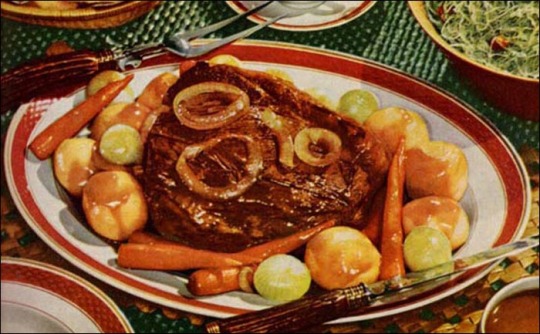
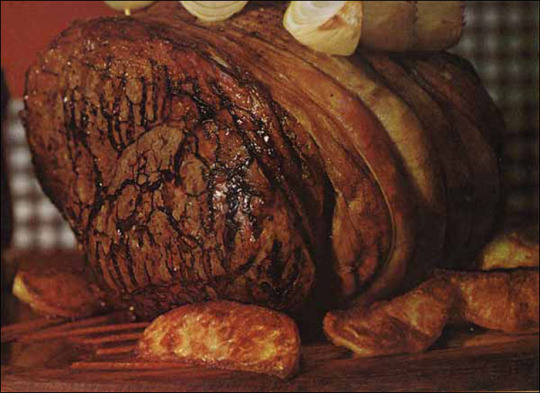

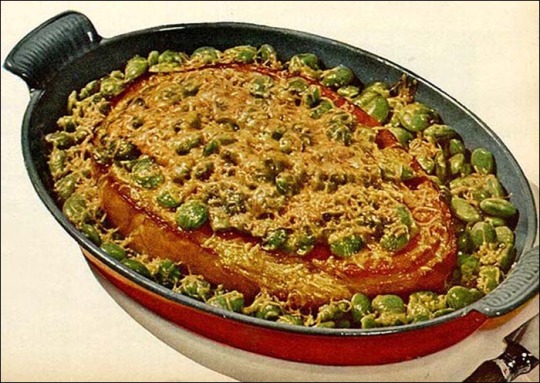
Dimly-lit meals for one and Sad desk lunches are yet more shuddersome antidotes to lovingly-photographed food porn erotica (porn would be messy close-ups of eating it).
However, despite what the article suggests, food photography doesn't need "the highest-spec kit while dangling from light-fittings for just the right angle" to look good.
*****
Using a phonecam while out with your friends in a crowded pizzeria isn't going to give the best results, but then neither is a joyless packed lunch on a rainy Monday in February, even if shot with a $33,000 camera like this Hasselblad, and full studio lighting.
@dduane's hobby site European Cuisines (down for maintenance) did just fine for years with a Sony W17, a compact digicam with a superb Zeiss lens.
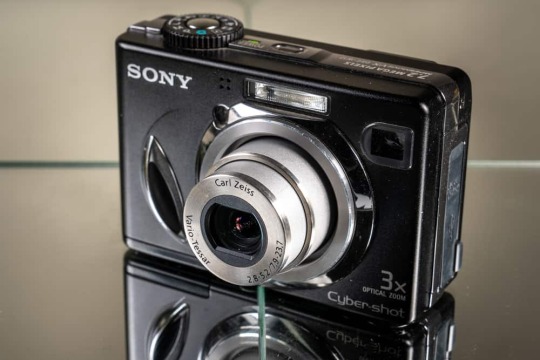
Here are Sony shots of an apple upside-down cake made with Beauty of Bath apples from our own tree (they really are pink all the way through) and a quiche Lorraine just out of the oven.
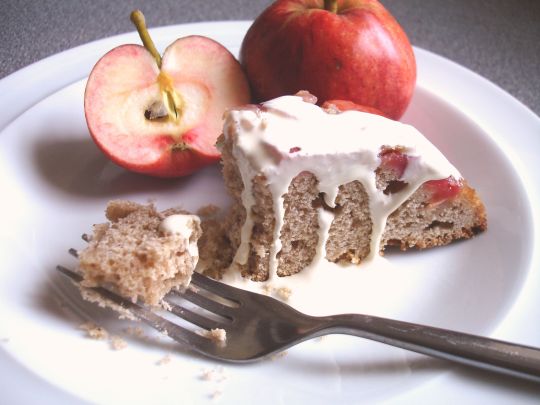
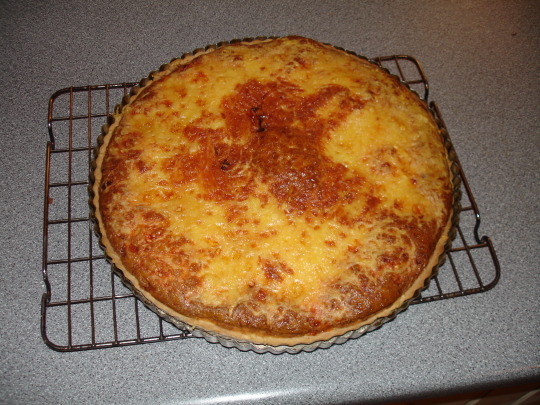
After a while I got a second-hand Nikon D40 DSLR; the money saved on second-hand let me afford an excellent lens, a top-of-the-line flashgun and that neat little flash which is so much better than the camera's built-in one.
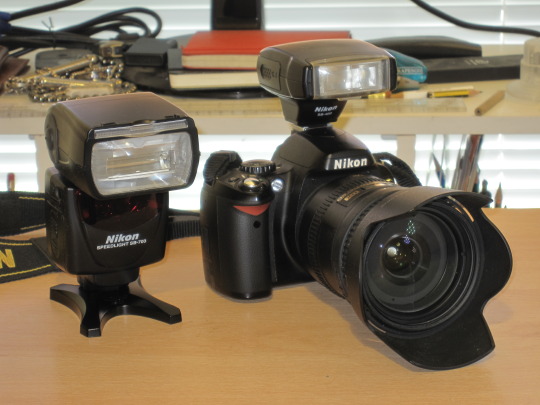
Here's the Nikon's take on last year's roast-goose-and-all-the-trimmings Christmas Dinner, as well as bacon (corned beef is the Americanised version) and cabbage for St Patrick's Day.
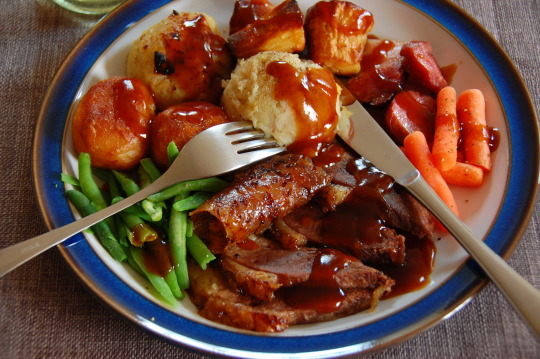

Now we're mostly using HTC U11+ smartphones whose cameras are not only top-notch but have excellent low-light capability.
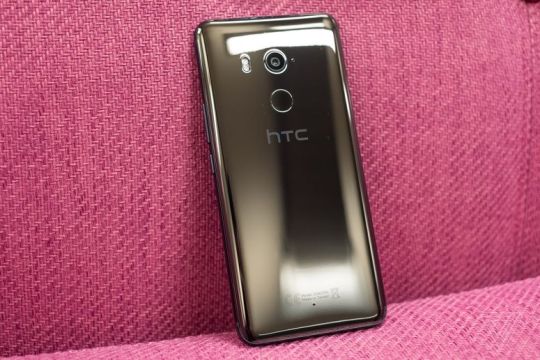
This is good, because our lighting has always been mostly natural daylight with occasional flash and reflector-screen assistance.
Here are U11+ images of soda bread done in a cast-iron casserole or Dutch oven, and Geflügelragout (a stew of roast chicken with red wine and lemon) with saffron-pumpkin noodles.
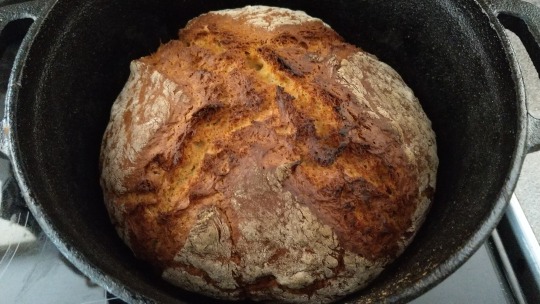
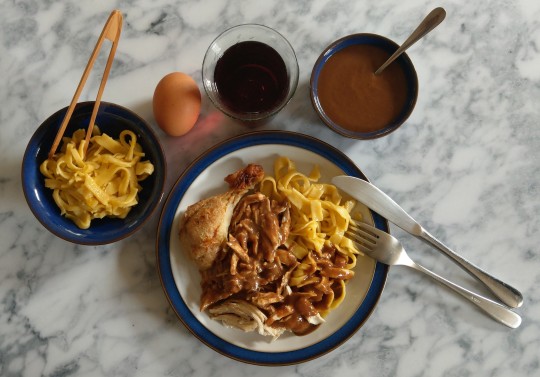
This has become Brightwood Vintner's Chicken in the Food and Cooking of the Middle Kingdoms project, and why not? It's delicious! Here's DD and U11+ in action, and the noodle close-up she was shooting in that pic.

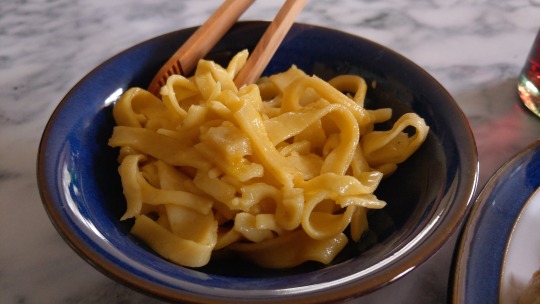
None of the food we shoot is "styled" for photography with varnish for glossiness, paint for cream, machine oil for honey, microwaved cotton-wool for steam and lots of other cunning but inedible trickery.
Our stuff is all for eating - so much so that getting "photograph the food" and "eat the food" in the proper order can sometimes be a struggle.
Like these crumpets, for instance.

You would, wouldn't you?
I nearly did, giving DD conniptions because she hadn't photographed them yet, and the Kerrygold butter was melting Just Right...
In a choice between shooting Have To Eat images and Want To Eat ones, we'll stay on the Want To side of the fence, and if people looking at those pix also Want To take a bite out of their screens, we're getting the job done.
And we're not hanging from the light-fittings to do it... :->
#food and drink#food photography#food and cooking of the middle kingdoms#gallery of regrettable food#james lileks
78 notes
·
View notes
Note
I am this 🤏 close to buying my first camera, although still in the research phase. Any words of wisdom?
A lot of advice will depend on your budget really tbh but
Get full frame compatible lenses (assuming you're buying a crop sensor camera) so if/when you upgrade down the road you don't have to get new lenses
Don't stress too much on getting the bestest camera ever. A lot of people get waaay too engrossed with specs and pixel peeping while the sun is setting over them in a beautiful fashion (Ken Rockwell has a really good article about this haha).
Check marketplace/craigslist for camera gear too and always haggle. I saved $150 by haggling for my recent lens purchases.
Get a nice comfy neck strap, the default Nikon ones are thin and dig into you. I love my Langly strap but there's a billion different options out there
While I also recommend not getting to engrossed with specs/minor details still do learn about what your camera can do and what features it may or may not have. One of the things that solidified my decision for D850 is the built in focus stacking feature. I have no patience for doing that manually (imagine taking 90+ photos and you have to focus a little more closely each time, gah I have huge respect for people who do it the hard way). If you're looking at something from the D3k or D5k line keep in mind they don't have built in autofocus and depend on it being built into the lens (some older but still great glass doesn't have this option).
21 notes
·
View notes
Text
The Imperial Palace, taken with a Nikon D70

This is the location with the Palace Hotel Tokyo in front and the Imperial Theatre on the right side. This camera was released in 2004 and has very low specs with less than 6 megapixels. But the images have some atmosphere and are still usable. The sound of the SLR shutter and the movement of the mechanical zoom are also very nice.
2 notes
·
View notes
Text
In lieu of... that.
I'm staying off of twitter tonight. Staying off of bluesky, insta, threads, and facebook too.
The only reason I'm even on here tonight is to show off the newest addition to my arsenal. The Nikon AF-S Zoom-Nikkor 17-35mm f/2.8D IF-ED (center):

As you can see, Popura likes the D. ;)
That completes the Holy Trinity of the D-series zoom lenses. I can use them with my D600 DSLR, any other F-mount DSLR, or even F-mount film cameras if I so choose. With an adapter I can use them on the mirrorless bodies, although the 70-200mm will no longer autofocus.
The 17-35mm was a Bargain grade buy, and it shows.

There's what feels like a detent between 24 and 28mm when zooming in towards 35mm. The rear lens cap that came with was a bit loose, but swapping out with a cap from a different lens in my collection took care of that.
It's due to rain most of tomorrow, so if I want to put it to work at the soonest, I'll need to head out first thing after work in the morning. Beats watching election results, eh?
Boops to @sirfrogsworth. My little friend is gonna start coming with. I need a more spacious camera bag now, so there'll be room for her to tag along from now on. My current bag can be reserved for baseball, as it's just within MLB specs.
#photography#digital photography#nikon photography#nikon#nikkor#nikkor lenses#holy trinity lenses#zoom lenses#popura taneshima#taneshima popura#nendoroid
2 notes
·
View notes
Text
Sony A7CII Thoughts After Two Months
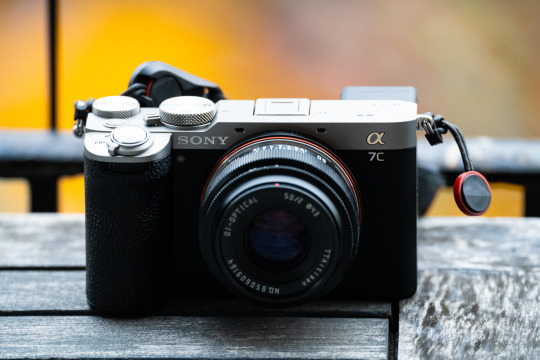
PROS:
The A7C was already one of my favorite cameras of all time and this improves on it a lot more than I thought when just seeing the specs. The added front dial alone makes it many times easier to control than the older model, and lets me use my typical Sony setup that I’ve grown accustomed to (aperture on front dial, shutter speed on rear dial, and ISO on the scroll wheel).
This is the quickest operating Sony camera I’ve owned. I think they kind of lulled me into forgetting how fast cameras can be going from off to on and taking photos. The A7RII was slow as heck with each subsequent model I’ve owned getting faster and faster (A7III to A7C to A7RIV). This new Sony is at a level of speed that makes it hard to go back to using the A7RIV which I still own (for now).
The autofocus is superb. I still haven’t really put it through its paces since I got the camera in the winter and the lack of light plus uncooperative weather has made it tricky to go out and shoot, but from what I have shot it’s nearly flawless. It’s way better than any camera I’ve owned before. It also has some really neat autofocusing modes, like the ability to focus on the eyes of birds. I’m not really around birds close up all that often but it worked really well at an exotic bird place in Jersey I went to recently.
The camera is 33 megapixels, which is a nice compromise between feeling like it’s sometimes too much (61) or too little (24).
The in-body image stabilization is really good. It’s certainly the best I’ve used in any camera so far…although to be fair I’ve never used a Nikon/Canon/Fuji/Olympus body with IBIS, only Ricoh (GRIII), Panasonic (GX7 and GX85), and Sony.
It can lower the shutter when switching lenses so dust doesn’t get in there. Not gonna lie it seems kind of dangerous and something that could potentially damage the shutter, but so far it’s kept the dust out.
CONS:
The viewfinder isn’t great. I’ve never really been an EVF snob since I’ve been shooting on mirrorless EVFs for over a decade now (I had a V1 back in 2013), but going from the A7RIV to this makes it kind of stick out. I also recently handled an A7RV, which really blows it out the water. With autofocus lenses it’s no problem, but using manual focus lenses is more difficult. On the plus side, it automatically goes into peaking mode when you manually focus, even when using adapted lenses or lenses without electrical contacts.
The camera only has one card slot. Not a huge dealbreaker considering every other camera I own aside from my A7RIV is the same in that regard. A second slot even if it was a micro would have been great though. A nice thing about the A7RIV is that I’ve never left home without a memory card because even if I forget one there’s always another in there.
No joystick. Again, not completely necessary but it’s nice to have. Most of my subjects aren’t humans (or animals, or other things that the camera can instinctively detect) so there are plenty of times I want to position the focus point myself.
Slow flash sync and shutter speed. This camera is like the A7C before it in that it only flash syncs up to 1/160. It also only shoots up to 1/4000.
Still don't love the flip screen because it makes quick waist-level shooting a pain in the ass. I wish they went with the A7RV style screen.
Speaking of, all the new perks on this camera make me want to use it a ton more than my A7RIV, but it also makes me want to get an A7RV. Maybe I'll sell my X100V since the prices are nuts right now...
SAMPLE PHOTOS:

Sony 85mm f/1.8 | ISO: 250, f/2.8, 1/125 sec

Sony Zeiss 55mm f/1.8 | ISO 100, f/1.8, 1/160 sec
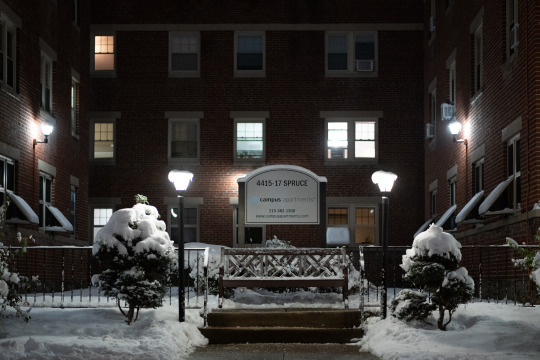
Sony 85mm f/1.8 | ISO 5000, f/1.8, 1/50 sec

Tamron 20-40mm f/2.8 @ 20mm | ISO 3200, f/2.8, 1/125 sec
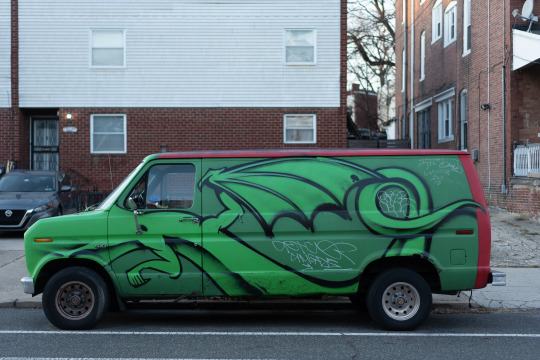
Sony Zeiss 55mm f/1.8 | ISO 100, f/2, 1/160 sec
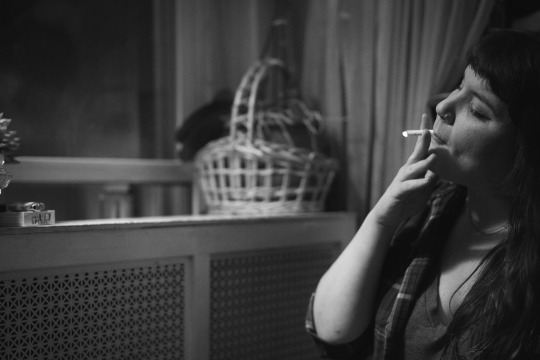
Sony Zeiss 55mm f/1.8 | ISO 12800, f/2, 1/50 sec

Sony Zeiss 55mm f/1.8 | ISO 100, f/2.2, 1/640 sec
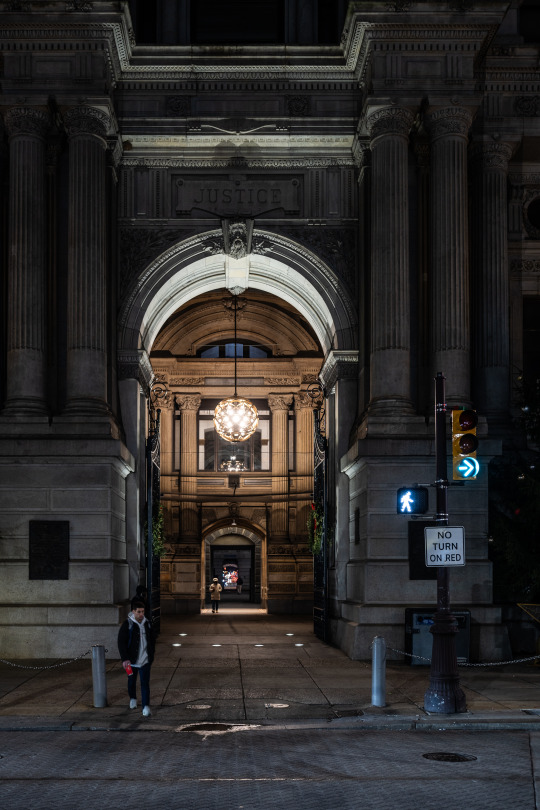
Tamron 20-40mm f/2.8 @ 32mm | ISO 320, f/2.8, 1/20 sec

Sony Zeiss 55mm f/1.8 | ISO 100, f/1.8, 1/500 sec

Tamron 20-40mm f/2.8 @ 37mm | ISO 800, f/2.8, 1/40 sec
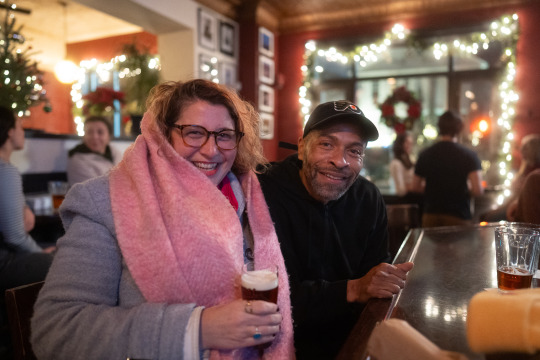
Sony 24mm f/1.4 GM w/ K&F Concept Black Diffusion 1/4 Filter | ISO 8000, f/1.4, 1/50 sec
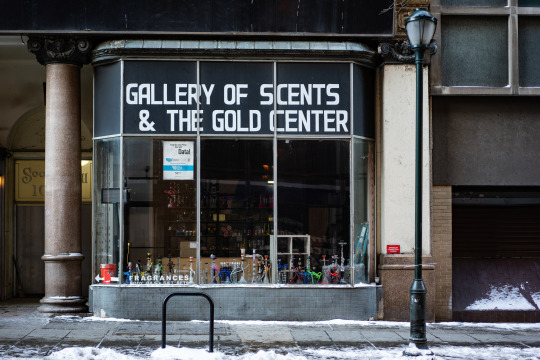
Sony Zeiss 55mm f/1.8 | ISO 250, f/1.8, 1/125 sec

Sony Zeiss 55mm f/1.8 | ISO 250, f/2, 1/125 sec
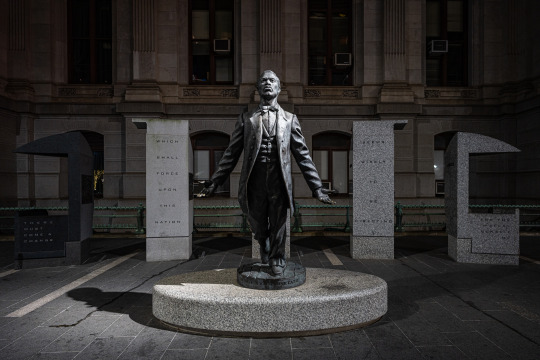
Tamron 20-40mm f/2.8 @ 20mm | ISO 400, f/2.8, 1/40 sec
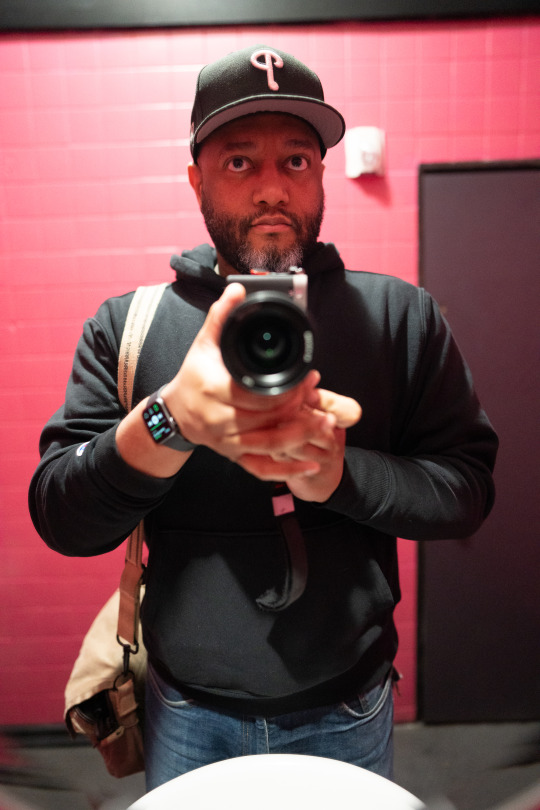
Sony 24mm f/1.4 GM | ISO 8000, f/1.6, 1/50 sec
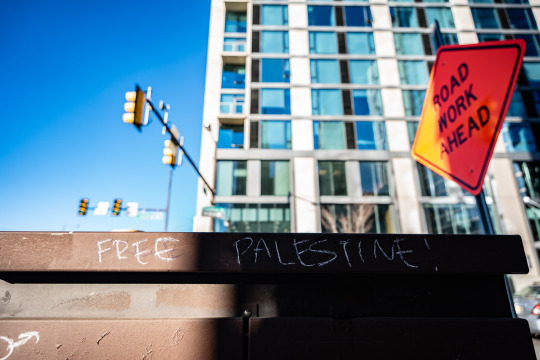
Tamron 20-40mm f/2.8 @ 20mm | ISO 100, f/2.8, 1/320 sec
10 notes
·
View notes
Text
I went Full-Fuji! (GFX One Year Review)
One year ago, I decided to ditch my Nikon DSLRs for a Fujifilm GFX 50R.
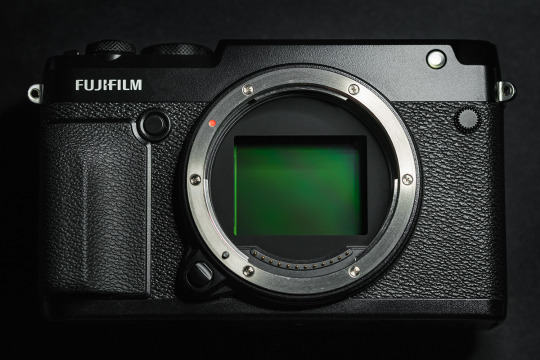
The GFX's sensor is larger than a full-frame sensor with a crop factor of 0.79
A little over a year ago, I still was using a few Nikon DSLRs to do just about anything. For portraits and landscape, I had a very respectable D810. Enough megapixels to provide some room for cropping and a decent dynamic range for most situations. For action and hobby-wildlife I had a D500. A durable mini-tank with performance that to this day would be hard to dismiss even in the light of mirrorless flagship innovation.
However, the question of my camera-future slowly crept into my mind. Was it time to change and upgrade into the Nikon Z system? Switching to a Z7 would indeed have been a sensible move, adapting older lenses while getting the sensor of the D850 in a smaller, cheaper body with an ecosystem of native lenses with the optical quality up to specs for the next decade. On paper and elsewhere, it should have been the obvious choice. Yet my answer to this question was a resounding "no" and I went against reason to set my sights on a Fujifilm GFX 50R. I took that model over the S because I enjoy the rangefinder form factor.
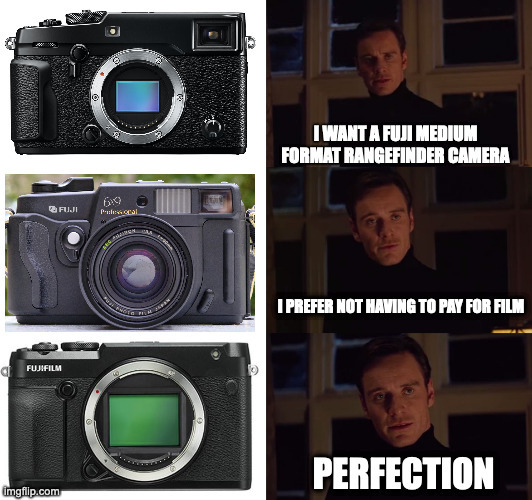
In hindsight, the smartest of all moves would probably have been to remain with what I had, adhering to the ancient photographic wisdom: "lenses are more important than cameras". My kits could have kept me satisfied for probably another 10 years if we are being honest. I could have stayed within the F mount ecosystem and could have taken advantage of its downright insane price drops to get top-of-the-line lenses for peanuts instead of selling the farm on a whim, however carefully considered it might have been.
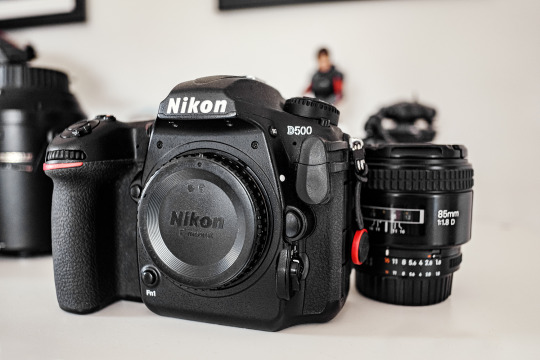
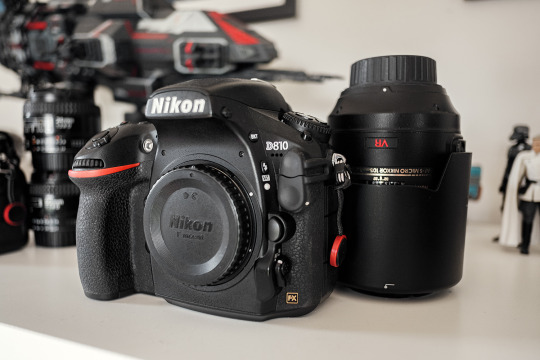
These old and trusty Nikon DSLRs got sold off to finance the 50R
The truth is that after fifteen years of walking the beaten paths camera-wise, I wanted to shake things up. I longed for a change of pace. I felt confident enough in my practice to know what type of photography I would want to engage in for the foreseeable future. I also felt confident enough that I'd be able to answer the call of the occasional assignment using a camera system that would have a non-negligible amount of drawbacks. The challenge even seemed like a fun new variable to add to contracts. Thus, the choice I made for my photographic future has been one born out of love rather than made from a place of reason.
When I think of good photographic memories involving the process — how photography is approached with mind and body — I immediately have two very different ideas jumping to mind and each has an ideal type of tool that best suits it. Neither of these are about efficiency. Neither of these are about performance beside niche-performance, perhaps. But that, is more of an acquired taste and it also comes at a price, but we'll see about that later.
The first idea is an instinctive and spontaneous approach, form of feral and visceral active meditation, akin to Daido's rabid dog method; roaming the streets clear of thoughts and letting the subconscious take the helm. Shooting, shooting, shooting and discovering everything later. No plan, only image-taking. No clear framing, no image-reviewing, no judgement to pass, no threads to weave. Only arrange and make sense later, if there's any of that to find.
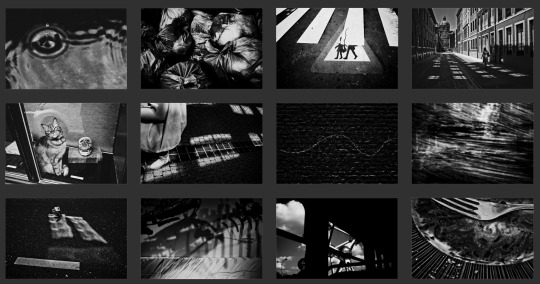
Results using the "rabid dog" method, using a Fujifilm X100, 2014
For this type of photography, the Fujifilm X100 was the tool that instantly clicked with me. The "poorman's Leica" is an apt way to describe what the X100 represented when it came out. I got the original 12mp camera in 2012 as a fun but capable toy to bring along my Nikon D700, until the shutter release button (which also is the on/off switch) broke off in 2020 after one power-up too many. I have since replaced it with a Fuji X-Pro 2 with the XF 18mm F2, 27mm F2.8 and 50mm F2 lenses. To this day, such small Fuji bodies are my tool of choice for this kind of photographic mood (and of course, for family pictures).

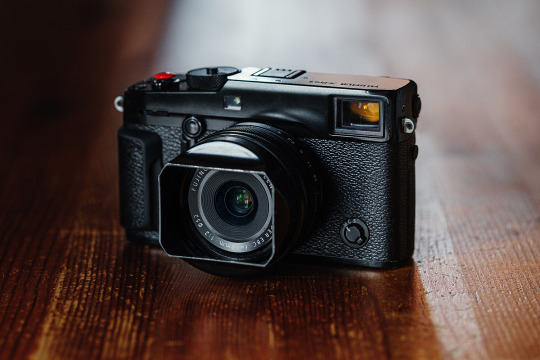
Fuji X100 later replaced by the X-Pro 2 as street photography go-to.
The second photographic process that I tend to naturally gravitate towards stems from my first year of photography school, during which all projects had to be done using film and would have us deal with the whole process (that is to say; shooting, developing, printing, framing, and displaying our work ourselves). It is with nostalgia that I look upon the memories from that time.
There sure is something inherently different in figuring out what to do with the exposures one has left on their film than being able to inconsequentially shoot within two hours three thousand pictures through which you can almost immediately browse. The latter is of course more practical and a welcome technological improvement, but the former brings an unhurried and deliberate focus that I find both refreshing and appealing.
When I think of my strongest recollection of touching the quintessence of the analog experience, the days of using my Mamiya 645 immediately come to mind. Such sluggish, heavy-as-a-couple-bricks box-machines compel one to being careful and purposeful every step of the way. I need that too.
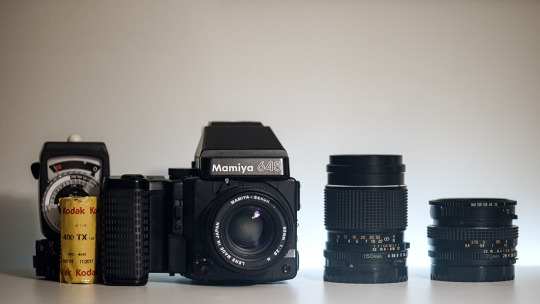
Mamiya 645 Super, since sold to finance GF lenses.
I have for the longest of time considered getting a more serious medium format camera but some quick-math with the price of film, chemicals and photographic paper made me realize that digital medium format was actually much more worth the investment while most definitely retaining some of the core characteristics of its analog counterparts. My love for the film process couldn't hold up against all the advantages of going digital, especially when buying second-hand.
Using medium format always felt like journeying inwards. It has allowed me to spend long hours in daydreaming-states paradoxically laced with an acute awareness of my surroundings. When thinking about medium format, I can recall the soul-washing quality of some of the winds that swept my cheeks while I was standing next to the tripod waiting for the exposure of the 50iso film to finish.
States of contemplation. Another kind of active meditation?
Of course, any camera can provide this type of feeling, but of all of the digital cameras available, medium format is the one type that will weigh you down the most and dictate the pace you work at.
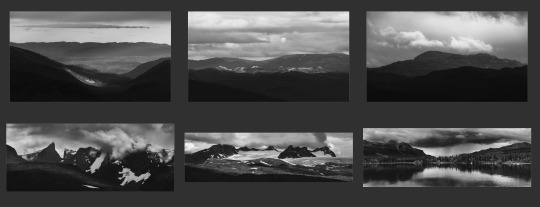
Telepanoramas created with the Fujifilm GFX 50R
Notice how these two ideas are almost the ends of a spectrum?
The first one is nervous and agitated, highly reactive, while the other is composed, meticulous and invites introspective fugue-states, yet they both share one vital element in the way that I approach them in that they take the practical considerations out of the picture to leave more space for what is going on within me.
The setting up of the camera or lack thereof becomes an excuse for something else. Maybe it isn't a surprise, that my adhd-ridden brain experiences this inexorable attraction for both these approaches. For they are in essence, two sides of the same coin, with each side matching different, specific and fluctuating needs.
Let's dive in!
After selling my DSLRs, I started looking for a good second-hand candidate. After a month or so, I found a barely used GFX 50R sold with a 50mm 3.5, a couple additional batteries and an L-bracket to boot. The price was rather attractive for the bundle, so it seemed like the time to take the leap. After a short but excruciating wait for the package to arrive, I finally was able to join the larger-than-35mm-sensor club.
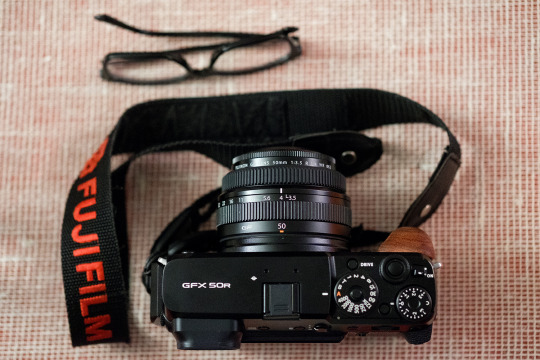
How it started
My first few months with the camera had me immediately blown away by the difference in output. The higher resolution and the sensor's qualities made the (very much existing) noise hardly noticeable when downsized to small printing or screen-viewing sizes. What also immediately struck me, was the looks of the images the camera produced. Images taken with the GFX feel more "3D" to me. It is a very peculiar and hard to describe feeling. I suspect it is a combination of factors; the depth of field of the larger sensor and the very smooth transitions between what's in focus and what is not that it permits, the colour depth, and the quality of the optics. I've seen many Youtube reviews, read forum threads or been in discussions on Discord about GFX cameras where people (who more often than not don't own one) will maintain that these qualities don't exist at all. After a year in the system I can confidently state that they're wrong.
I can't really put my finger on what causes these differences as I am not as tech-savvy as I could be, but it is still clear as day. To use a pretty apt analogy, I would say that the difference between full-frame and (crop) medium format is akin to the difference between aps-c and full-frame cameras. Are they deal-breaking? Not necessarily. For some people they can be. Are they noticeable? Definitely. It is especially funny to me to see medium format cameras being dismissed by such a many full-frame shooter who at the same time, is constantly bashing aps-c sensors.

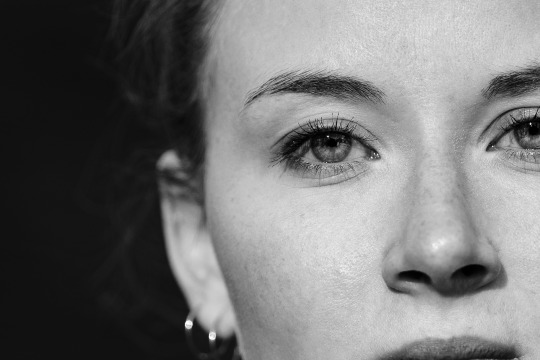
Don't you love to pixel-peep? Omnomnom (imagine with 102mp!)
This being said, I will always fully stand by the statement that full-frame cameras are the more sensible choice as they are better all-rounders by design. High-res cameras like Sony's A7RV or equivalent are also better high-iso performers than the aging IMX161 sensor that the GFX 50 series uses, which sees its operational limit at around 6400iso (but the GFX 100 would be another matter entirely). A top-tier full-frame camera is evidently more practical, lighter and cheaper without any deal-breaking image quality difference to what the medium format niche can offer. When all costs are factored in, the choice would seem self-evident. If you consider medium format, it should be understood that you know this before committing to any bigboy sensor. Or don't heed this and make people who buy second hand happy, as GFX gear loses almost one third of its value once it hits the second hand market (a consequence of too many people jumping on the medium format bandwagon only to realise — way too late — that it wasn't for them).
Are we cooking yet?
I need to talk about the GFX's files for a little bit; I'm a raw shooter only — which hopefully you'd have guessed — (in my opinion anyone buying into a medium format to shoot jpeg must have cognitive issues or too much money, or possibly both) and I have to say that when I opened the raw files to give the sliders their very first +100/-100 or +3/+4 EV from base iso (or any combination of these) I was utterly floored by how well the files could handle such an ungodly beating.
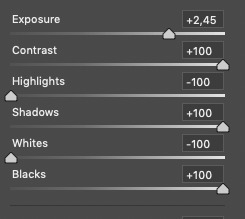
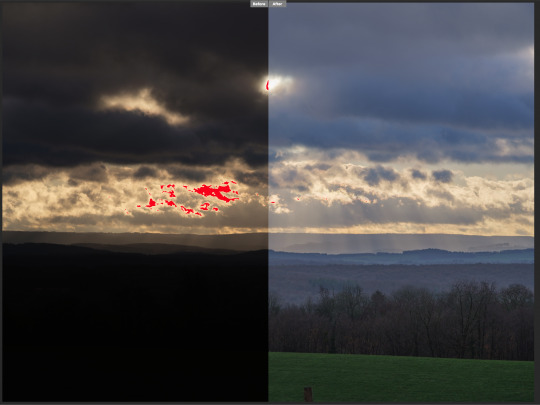
This isn't a joke, I promise.
This type of camera makes the slider memes come true, to a point where for the first few months, my ability to edit properly was severely impaired by the glee I experienced while pushing everything way too far. I believe it is not an uncommon symptom at the start of a medium format journey. It takes a while to come back from that and simply be able to tell yourself "ok here, maybe less dynamic range would be a good edit". I'm getting better at this as I consciously try to avoid overcooking.
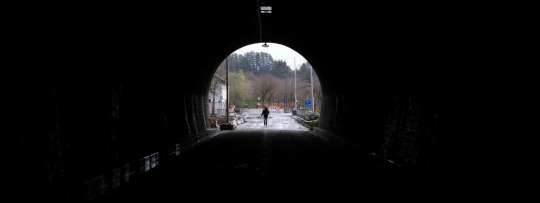
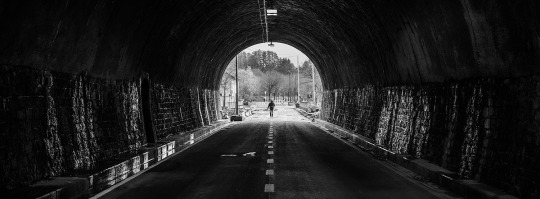
Clean recovery? Can do!
On the image-taking side of things, the major change for me with regards to file-handling is that I'm almost systematically exposing for highlights now. Adding 3EV and boosting shadows in post when shooting at low iso is inconsequential in terms of image quality as there won't be any visible noise whatsoever on the output, unlike my aps-c cameras that will show noise even at base iso. Similarly to many other aspects medium format manages well, this is something I got used to very quickly.
To adapt or to not adapt, that was the question, here's my answer:
At first, I tried adapting my old Mamiya 645 lenses to the 50R. It was useful in the sense that it allowed me to enjoy different fields of view at no cost but it quickly felt like a plaster on a wooden leg. I'm not someone who enjoys the manual focusing as a default and I've grown more and more intolerant of the optical flaws of older lenses as time went by. I realised that it wasn't a viable long term solution for me and quickly chose to sell all my Mamiya cameras and lenses to finance native glass for the GFX.
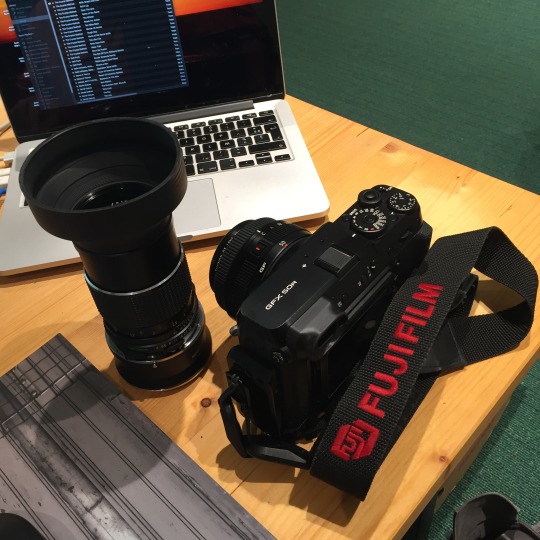
My experience adapting? It was alright but not at all ideal.
Which lenses then?
Getting into the GFX system I promised myself I would make no compromise whatsoever on optical quality and directly aimed for the 250mm F4 (mainly for tele-landscapes) and 110mm F2 (mainly for portraits). The grind felt long but it really wasn't, as I managed to secure both lenses from the second hand market within 6 months. It is only later that I added the 35-70mm "kit" lens to my arsenal to fill the wide-angle gap I had. As I seldom feel the need to shoot wider than short-tele fields of views, this is more of a lens of convenience.
The difference between adapting older lenses and using native glass was night and day to me. Two things made this the better choice in my view: first, I've been actively seeking the "clinical" quality of modern optics. I do not care much for the "character" of older lenses especially not if the word is used to help one overlook a lens' unforgivable flaws. Second, while there sure are lenses worth adapting out there, this come at a cost for the adapting to be worth it (the cost of an AF-capable adapter and of course the cost of the lenses themselves) which I saw as a waste of my limited resources. I told myself I wasn't going to make compromises, remember?
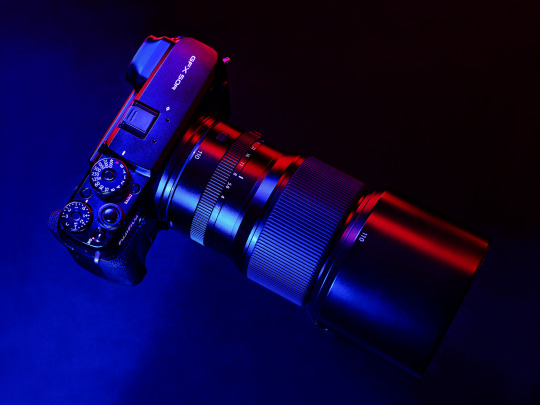

One year after switching, I am now knee-deep into the system, having sold most of my Nikon gear as well as my Mamiya medium format film-cameras to acquire some of the incredibly hard to resist GF lenses.
After a year of transforming a heap of dormant gear and side-gig revenue into new lenses, I also noticed that the representation I had about the worth of money also changed radically when gear was concerned.
A little over a year ago, an XF lens priced 800€ definitely seemed like a steep investment I'd try to find alternative choices for. Nowadays, 800€ is a mere budget lens in my mind. Seeing the price tags of GF lenses doesn't make my head spin anymore and this is somewhat worrisome for the thrifty Dutchman living in the back of my brain.
With the announcement of the 500mm F5.6 lens being in development (a focal length I definitely miss from my Nikon days, I'm a sucker for ultra-telephoto landscape photography), I fear I will manage to push my monetary boundaries further back yet, which I will help achieve by selling my X-T3 video-oriented kit.
APS-C: you're dead to me.
An unforeseen consequence of my GFX switch was that my aps-c cameras were pretty much relegated to the bottom gear drawer and seldom used barring a few notable exceptions (such as a wedding gig) where the need for its autofocusing speed was greater than the need for image and file quality.
To reuse the analogy I made earlier; my X-Pro 2 and X-T3 have become to me what a micro-four-thirds camera would be to a full-frame camera user. Getting into Fujifilm's medium format system prompted me to think about how I use my cameras and to what end. The realisation that there is a clear split in my photographic approaches I evoked at the very beginning of this article is the result of that thought process.
Although I will sell my X-T3 because it feels superfluous and I want to stop my video gigs completely, (and because my need for GFX lens money is still great), I would never part with my X-Pro 2 nor the few XF lenses that I have as they serve a totally different purpose to that of the GFX's.
Having a compact, fast, discreet yet still capable camera that can be casually put into a pocket is an advantage that I would be a fool to part with. The X-Pro is a more practical choice for street-photography, documentary in less-than-favourable conditions, as well as for family pictures, when packing a brick of a camera and two bricks worth of lenses for a walk in the park in suboptimal weather would be met with a tired roll-eye from my spouse.
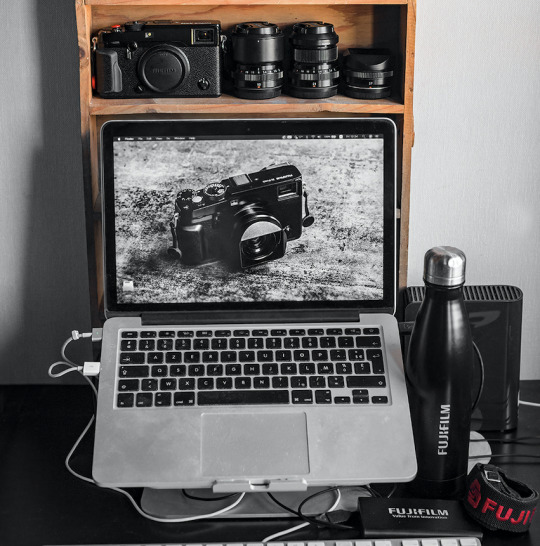
My dear X-Pro, I'm Never Ever Gonna Give You Up
Of course there have been many occasions for which I have chosen to take the challenge and went into these situations with the GFX. However, I wouldn't want the GFX to be the only option at my disposal in such cases.
For example, during the last wedding I shot, when the dining room got darker and the guests started moving around a lot (and dancing), the switch to aps-c cameras was absolutely necessary because of how difficult it was to consistently get acceptable results in poor light and with subjects making erratic movements. When you are held under a result-delivering imperative, you have to be able to honour it.
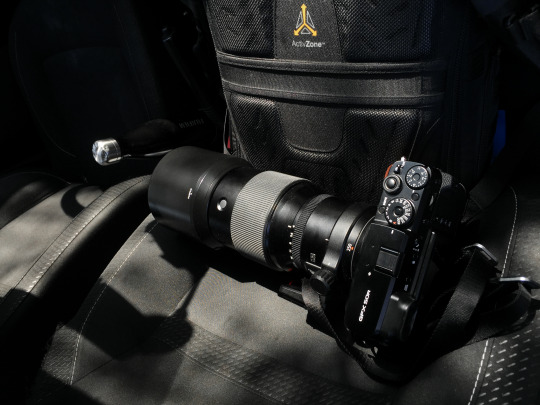
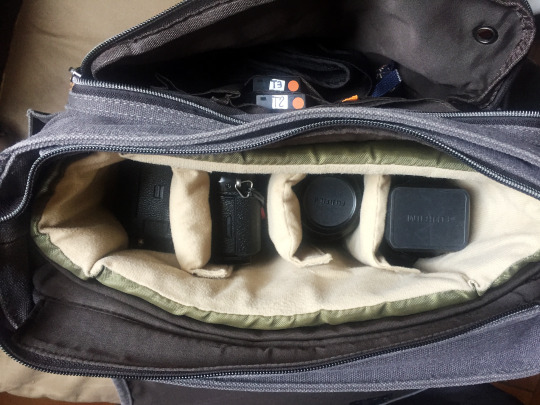
Packing a Fuji GF or Fuji X kit can be a slightly different experience
"Megapickles don't matter!"
This was an idea that I lived by just a few years ago. I changed my mind. I still believe that megapixels don't matter when you don't have them. Just like one should shoot with the camera one has / is able to afford. It doesn't matter in the grand scheme of things but all these technical niceties just make one's life more comfortable. Cropping, denoising through file reduction algorithms, or enjoying detail endlessly because one can, these are just the icing on the cake. I just happen to like my cakes with more icing than cake now.
Regarding resolution specifically, it's been another area in which there seems to be no possible coming back. Nowadays, every time a manufacturer announces a new camera and I discover they plan to fit it with a 24MP sensor I dismiss the information entirely. It doesn't register anymore. 32-36 is the new 24 in my mind now and it's sometimes difficult to come back from those expectations.
This being said I have no issue using lower resolution aps-c that I own and could perhaps even have fun with a X-Pro 1 because then the output quality wouldn't be my prime concern. It is only concerning new releases that my interest dips firmly for "low" MP cameras.
Did I tell you that medium format AF sucks?
Before I conclude this one-year review, let me hammer this point in with a two-handed mace; it can't be understated, especially for the GFX 50 series which uses contrast detection — the autofocus will throw you back to the early 2000s. Be ready to be stuck on single point, single AF mode because that's the only thing that will be consistent enough.
Then let's not forget other factors that add to the bad and make it worse; the shutter lag is half a second, the sensor readout speed is 1/4th of a second, and the time the shutter takes to clear the large sensor in combination with the camera's high resolution means you'll need higher shutter speeds in order to get rid of motion blur when shooting handheld (count about one stop faster than usual). Those would be valid reasons as to why a less niche camera system makes more sense for a lot of people.
The final comment:
Despite its sometimes dramatic drawbacks, I definitely have found the pleasure I sought when I originated this system switch. The change and the adapting my process is engaging and makes me think more about what I do, what I use, when and why. This is a win on its own.
All in all I feel like I am still at the very start of my journey though I've had the opportunity to test my GFX 50R in a wide array of situations in the past year (portrait, landscape, documentary) it seems like the way forward is clear and also opened for plunging deeper into this incredibly fun (but needlessly expensive) rabbit hole.
The upcoming 500mm, the prospect of finding an original GFX 100 (with its weirdly appealing tiltable EVF) are ideas that will — for the foreseeable future — definitely keep pulling me back in (and emptying my pockets).
Fun! Fun! Fun!
8 notes
·
View notes
Text
Welcome to GearClix, your trusted online store for the latest digital cameras, camera lenses, mirrorless cameras, and camcorders across the UK. Whether you’re a passionate hobbyist, a professional photographer, or a content creator looking to upgrade your kit, GearClix offers a comprehensive collection of premium imaging gear and accessories – all with competitive prices, free UK shipping, and exceptional customer support.
🎯 Why GearClix?
At GearClix, we don’t just sell camera equipment – we empower photographers and creators to capture their world with clarity, creativity, and confidence. Our curated collection features the latest models from top brands like Canon, Sony, Nikon, Fujifilm, Panasonic, and more. We aim to make your buying experience easy, reliable, and rewarding.
📸 Explore Our Wide Range of Digital Cameras
Looking for a digital camera that fits your photography style and budget? We stock DSLRs, point-and-shoot compacts, and bridge cameras, perfect for travel, portrait, street, or general-purpose photography.
Some of our top picks include:
• Canon PowerShot and G-Series • Nikon COOLPIX • Panasonic Lumix series • Sony Cyber-shot
Whether you're comparing digital camera prices or researching the best beginner models, GearClix has detailed specs, expert insights, and real-time availability to help you decide with confidence.
🔍 Mirrorless Cameras: Compact Powerhouses
Mirrorless cameras are leading the imaging revolution with their blend of portability and power. GearClix is proud to offer the latest mirrorless models from Sony Alpha, Canon EOS R, Nikon Z, and Fujifilm X-series.
We stock body-only mirrorless cameras and mirrorless kits with lenses, all at competitive prices, perfect for vloggers, YouTubers, wedding photographers, and more. Plus, you can check Sony mirrorless camera prices, compare features, and choose between full-frame or APS-C systems – all online, hassle-free.
🔭 Camera Lenses – For Every Shot, Every Vision
No great camera is complete without a high-quality lens. From wide-angle and portrait primes to telephoto and macro lenses, GearClix brings you a massive range of optics for every creative need.
Shop lenses from:
• Canon RF & EF lenses • Nikon Z & F-mount lenses • Sony E-mount lenses • Sigma, Tamron, and ZEISS third-party lenses
Use our filters to sort by price, compatibility, focal length, or lens type and enjoy fast, secure checkout with free shipping.
🎥 Professional Camcorders for Video Creators
Need serious video gear? Browse our hand-picked collection of professional camcorders, including Canon XA and XF series, Sony FX and Handycam series, and Panasonic Pro Video models.
Our camcorders online in the UK feature models with 4K UHD, HDR, XLR audio inputs, and advanced image stabilization – perfect for documentarians, wedding videographers, and event shooters.
Whether you're searching for the best camcorder for YouTube, budget-friendly options, or studio-ready gear, GearClix helps you make the right choice.
🧰 Must-Have Accessories – All in One Place
To round out your setup, we offer a wide selection of camera accessories, including:
• Camera bags and hard cases • Tripods and monopods • Camera flashes • Extra batteries and chargers • Memory cards (SD, CFexpress, XQD) • Lens filters and cleaning kits
We regularly update our inventory with new arrivals, best-selling accessories, and exclusive bundle offers.
💬 Why Customers Trust GearClix
✅ Trusted UK-Based Store ✅ Competitive Prices on Cameras & Lenses ✅ Free & Fast UK Shipping on All Orders ✅ Secure Online Checkout ✅ Expert Advice & Friendly Support ✅ Latest Product Releases from Global Brands
Thousands of creators across the UK choose GearClix because we deliver the gear they need – without the stress. Our site is easy to browse, our checkout is fast and secure, and our support team is always just a click away.
🛒 Start Your Gear Journey Today
Ready to upgrade your kit or finally buy the lens you've had your eye on? Whether you're looking for a mirrorless camera online, a Canon lens at the best price, or the latest Nikon camera in the UK, GearClix is your go-to destination.
👉 Visit GearClix.com to explore our full catalogue and enjoy free shipping across the UK.
1 note
·
View note
Text
since i've gotten so many tags and reblogs asking about what i used to take these, i'm going to give all the specs here:
(image numbers top to bottom and left to right)
these photos were all taken with two different setups i have
setup A: nikon Z5 camera, regular tripod, tamron 150-600mm lens, costs around $2K USD
setup B: 8'' dobsonian telescope (1200mm, 2400mm with a 2x barlow), ASI178mc zw) camera and 2x barlow, costs around $1K USD (not including the price of a laptop to run the camera)
images 1 and 2 were taken with setup A
image 3 and 4 were with setup B (no 2x barlow)
images 5, 6 and 7 were with setup A
image 8 was with setup B (with 2x barlow)
and finally images 9 and 10 were with setup A
hope this helps! and if anyone has any questions about how to get into this sort of thing or about the equipment/image processing, feel free to ask but preferably reblog or comment on this post instead of tagging, thanks again everyone!
the moon is cool i think. big fan of the big rock.
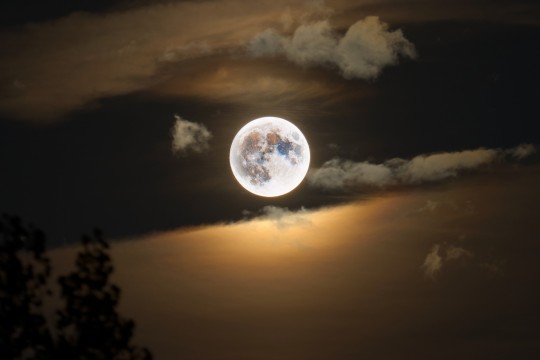

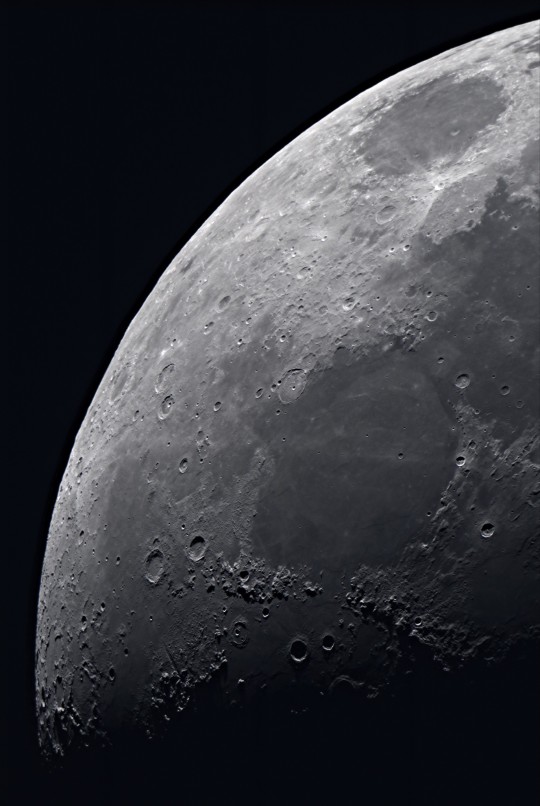
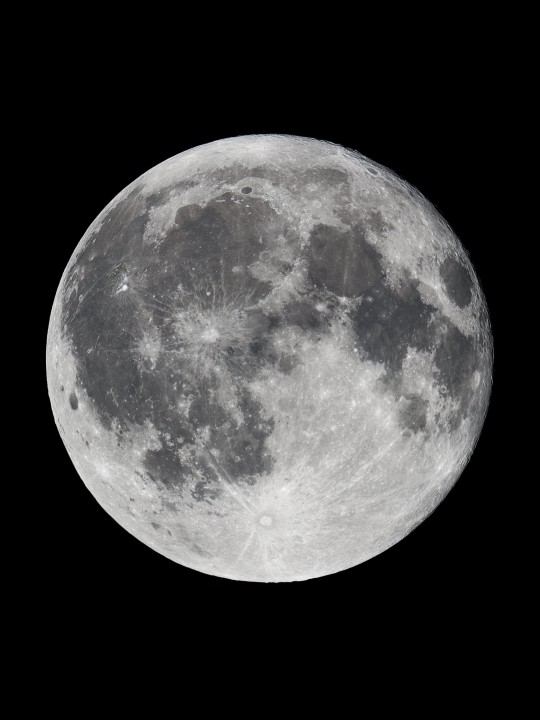
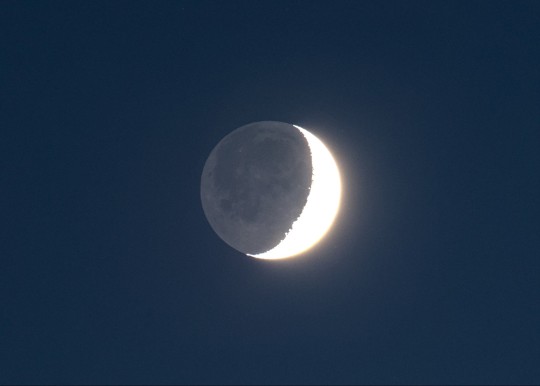


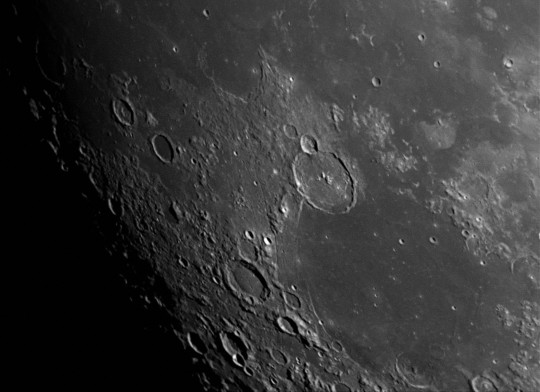
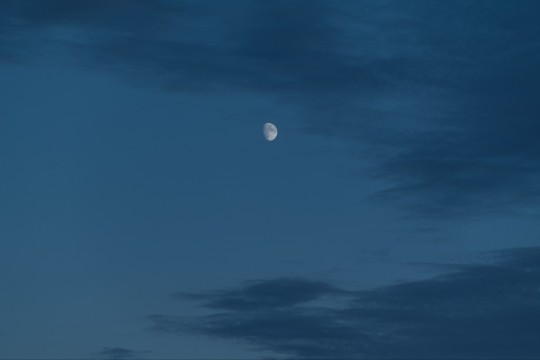

photos all by me
14K notes
·
View notes
Text
Think Tank Photo's new DarkLight 20L Backpack

I’ve been a fan of Think Tank Photo’s products for a while now. Durable and over engineered, their stuff is made to put up with anything a working photographer can throw at it. Their Hydrophobia rain covers, for instance, have saved my gear many times in the frequent Florida downpours. I’ve wanted to have one of their backpacks for a while, but I’ve had a hard time finding something medium-sized that will complement my F-Stop Gear Tilopa pack - a massive 50-liter bag that is sometimes just too big for the assignment, especially when traveling to cover a race.
I was excited to get the news from Think Tank Photo about their new DarkLight™ 20L Tactical Backpack, described as a “camera rucksack engineered for urban and field deployments,” with a MOLLE panel and a removable waist-belt. I have gotten used to packs with waist-belts while hiking, and it’s now a feature I want in every backpack I use. The MOLLE panel meant that I would be able to adapt the DarkLight to my packing needs at the moment with separate pouches and accessories, including some from Think Tank that I already own. So I picked up a DarkLight in Montane Green. First impression: This is Think Tank’s best-looking backpack. Rugged and simple in design, its versatility is obvious straight away, with the MOLLE panel front and center and webbing rail on the side. There’s a black version of the pack, but I really like the shade of green on mine. It certainly looks more like a military or hiking backpack than a camera bag, which is always a good thing. There’s even a hook and loop strip on the front for morale patches. I have to admit, this was a small selling point for me – I’m a guy who likes stickers and tattoos, so why would I not like patches? Besides offering a spot for a little self-expression, it’s useful for adding ID patches, like “PRESS”, a capacity in which I sometimes work.

Inside the backpack, there is more room than you would expect in a 20-liter pack. Think Tank’s website shows plenty of options for arranging your gear, but nothing beats doing it yourself with your own equipment. I can fit a Nikon D5 pro body with an attached 70-200/4 lens and even an RRS plate on the camera – it’s a tight fit because of the D5’s height, but it works. Then I can add a Z 6II mirrorless body or a D500 without a grip, and a couple of lenses. I also need to add a Flashpoint eVOLV 200 “pocket” flash, and that goes in a pouch I have that easily attaches to the pack’s MOLLE panel with straps. Tripod or monopod, camping seat, water bottle? I can use the side pocket or the webbing rail.
The DarkLight has another great feature for photographers on the move who need quick access to their gear: a top-loading panel that lets you pull out your camera and attached lens for that quick grab shot. With the waist-belt on, you can also slide the whole pack around to the front of your body and get anything out of it without setting the backpack down. Both access options are good to have, though I will admit that I will rarely use either as I usually have the camera slung cross-body style on me and at the ready.
Other choice details include plenty of adjustable internal dividers, YKK zippers, a pass-through handle for luggage (another useful travel feature), an included rain cover for when the PFAS-free coated exterior isn’t weather-resistant enough, and pockets for a tablet and a small laptop. It fits my Lenovo Yoga 6 just right. Here are some specs to help you with your buying decision:
Exterior Dimensions: 19.5” H x 12” W x 8.5” D (49.5 x 30.5 x 21.6 cm) Interior Dimensions: 18.5” H x 11” W x 5” D (47 x 27.9 x 12.7 cm) Weight: 3.4 lbs. (1.54 kg) (including divider set, rain cover, removable waist belt) Volume: 20 Liters (NOTE: There is also a smaller DarkLight 14L model available.)
When it comes to comfort and regular use, the airmesh-covered straps and waist belt make the pack easy to carry even when loaded down, and the airmesh padding on the back panel keep you from getting too sweaty. Zipper placement is straightforward and easy to reach; other packs put zippers too close, and you end up opening the wrong pocket. The tripod/water bottle pocket is simple to use and can be cinched tight for smaller bottles or to keep tripod legs together. The MOLLE panel works as advertised: I strapped on some pouches and took out the pack to cover a race. Everything stayed put as it should.

I’ve mentioned many of the pros about the DarkLight backpack, and for a well-rounded review I am now going to go over a few of the cons. No pack is perfect, as evidenced by my buying and selling several bags from different brands in the last few years alone – I think many of you can relate to that. The backpack has lots of room inside, but not enough pockets. Maybe if the big front pocket were expandable, I’d be happier with it, but you only get that space and a small pocket on top of the pack for a wallet or small phone. I have batteries, memory cards, granola bars, bug repellent, and other stuff that needs a permanent home in any bag I carry. I loaded up that front pocket and things got tight fast. I ended up stacking stuff in the narrow opening to make it work, which meant that if I wanted something at the bottom, I would have to get to digging. The DarkLight has a top handle, which is useful, but no finger loop at the bottom. Why do I want a finger loop? I got used to having it in other packs; it makes it easier to pull the bag in and out of the car – especially when you are also loading other bags in the rear, like lighting equipment or even luggage. It’s a small complaint, but it would be nice to have on the DarkLight. And if the backpack was just one inch deeper, my Nikon D5 would fit even better. Every photographer has individual and somewhat unique needs, and no one pack will fulfill all of those requirements – it’s why most of us have more than a couple of bags, right? But I have been around long enough, and have known and worked with enough photographers, to know that the Think Tank DarkLight 20L will work very well for many active photographers. It ticks a lot of the right boxes. Find yours here: Think Tank Photo DarkLIght 20L Backpack.
0 notes
Text
How to Pick a Camera Lens for Stunning Dubai Photoshoot
Dubai serves the imagination like a canvas waiting to be filled with lavish tales. Every photograph captures a scene, slowly composing itself, be it a drone’s view of the golden dune blending into the stark skyline or the languishing sun at the pinnacle of Burj Khalifa. It is indeed a sight to behold. As nice as all of this sounds, the wrong lens will distort everything. It is more like going to capture the magnificent skyline, only to find out your lens isn’t able to adapt to the setting. Or capturing the vast desert, only to miss the mesmerizing dance of light and shadow. Choosing the right lens is not just about specs but, it’s about bringing Dubai’s beauty to life in a way that stops people in their tracks.
The emotions, sharpness, and depth captured in each photo define its beauty. It ultimately boils down to what lens is being used. Whether it be a photographer in Dubai taking exquisite portrait shots, or a videographer in Dubai capturing phenomenal landscapes. Putting a wide-angle lens on will allow for fantastic shots to be taken of the city, and for Old Dubai photography, a prime lens will work wonders. If you’re capturing a yacht gliding past Palm Jumeirah, a telephoto lens will bring it into sharp focus.
But with so many choices out there, how do you find the perfect lens that truly matches your creative vision? Are dreamy portraits your strong suit which means greater priority on bokeh, or sharper images in the harsh midday sun are your forte? This puzzle can be solved by considering your subject, your preferred style, and the constant shifts in lighting in Dubai.

Understanding the Different Types of Lenses in Photography
It is important to note the wide variety of camera lenses available when selecting one. Each lens has its unique uses, and understanding them helps you make wiser decisions to achieve your goals.
1. Wide-angle lenses
Wide-angle lenses serve the purpose of taking photos of large cityscapes and immense skyscrapers. Their difference in focal lengths ranges between 10mm and 35 mm. These lenses are perfect for taking Dubai’s iconic desert, skyline, and the Burj Khalifa.
2. Standard Lenses (Prime and Zoom)
These lenses are ideal for portraits, street photography, as well as casual photos in Dubai’s colorful souks and cultural sites. The focal length of these lenses, ranging from 35mm to 85mm, duplicates the human eye remarkably well.
3. Telephoto Lenses
If you’re capturing a yacht gliding past Palm Jumeirah, a telephoto lens paired with the right camera — like the Nikon Z6III, Canon EOS R100, or Sony ZV-E10 — will bring it into sharp focus. But with so many choices out there, how do you find the perfect lens that truly matches your creative vision?
4. Macro Lenses
Dubai’s detail-rich textures, including traditional jewelry, Arabic calligraphy, and desert plants, can best be captured with a macro lens due to their capability of extreme close-ups with high detail.
How Do I Choose a Camera Lens?

When selecting a lens for your Dubai photoshoot, a photographer in Dubai should consider the following factors:
1. What Are You Shooting?
Landscapes and Architecture: A wide-angle lens is best.
Portraits: A 50mm or 85mm prime lens provides stunning background blur.
Wildlife and Sports: A telephoto lens helps capture distant action.
Close-Up Details: A macro lens is essential for intricate shots.
2. Lighting Conditions
When capturing the golden hour and vibrant neon lights of the city, it is advisable to use a wide aperture lens like f/1.8 or f/2.8 on the extreme ends of the lighting spectrum in Dubai.
3. Lens Versatility
If you want an all-in-one solution, consider a zoom lens like a 24–70mm f/2.8, which provides flexibility for various shots.
Best Camera and Lens for Beginners
For those new to photography, selecting the best camera with lens beginner options can be overwhelming. Here are some solid choices:
Best Lens Camera for Beginners
Canon EF 50mm f/1.8 STM — Great for portraits with sharp focus and beautiful bokeh.
Nikon 35mm f/1.8G — A fantastic general-purpose lens.
Sony 18–135mm f/3.5–5.6 OSS — A great all-around zoom lens.
Best Camera and Lens for Beginners
Canon EOS R100 with 18–45mm Lens — A budget-friendly mirrorless camera with a versatile starter lens.
Nikon Z6III with 24–70mm Lens — A great option for those stepping into professional photography.
Sony ZV-E10 with 16–50mm Lens — A fantastic choice for vloggers and content creators.
Good Camera Lenses for Beginners
If you’re just starting out and wondering how to choose a camera lens, consider these beginner-friendly options:
Kit lenses (18–55mm) — Good for general photography.
50mm f/1.8 — Ideal for portraits and low-light photography.
10–18mm Wide-Angle Lens — Great for cityscapes and interiors.
How to Pick a Camera Lens for Dubai’s Unique Photography Conditions
Dubai offers an array of environments that demand different types of lenses in photography. Here’s how to match your lens choice with the scene:
1. Desert Photography

Best Lens: Wide-angle lens (16–35mm) or telephoto (70–200mm).
Why? To capture sweeping dunes and wildlife from a distance.
2. Skyline and Architecture

Best Lens: Wide-angle lens (10–24mm) or standard zoom (24–70mm).
Why? For towering buildings and sharp cityscapes.
3. Night Photography

Best Lens: Prime lens with a large aperture (f/1.4 — f/2.8).
Why? To maximize light intake and reduce noise in low-light conditions.
4. Cultural and Street Photography

Best Lens: 35mm or 50mm prime lens.
Why? For capturing authentic moments without distortion.
Final Thoughts
Choosing the most appropriate lens depends on what you want to achieve with photography and Dubai’s special geography. It does not matter if you are a proficient photographer or just starting out; having good camera lenses requires knowledge of different lenses and their uses.

Dubai videographer aims to fulfill your expectations because we guarantee to capture your vision perfectly. As a prominent videographer in Dubai and photographer in Dubai, we have a unique approach to showcasing the beauty of the city. Our services also include Real Estate Photography Dubai where properties are brought to life by remarkable images that appeal to prospective buyers and clients. No matter if you are looking for professional photography for business or private ownership, we provide our customers with the best lenses and top-quality service. Let us at Automedia enable you to share your message with the world through incredible visuals.
#photography in dubai#camera#camera lens#How to Pick a Camera Lens#Dubai Photoshoot#Camera Lens for beginner#camera for photography
0 notes
Text
Viltrox AF 20mm F2.8 Air Full-Frame Lens for Nikon Z-Mount Launched in India | Check Price, Specs
Amazon India ( Amazon.in ) has listed the Viltrox AF 20mm F2.8 Air ( AF 20/2.8 F/Z ) Full-Frame Wide Angle Lens made for the Nikon Z-Mount Mirrorless Cameras online. The launch selling price for this lens is ₹15,199 ( lowest price on Jan 25, 2025 ). The MRP list price is ₹19,000. In the US, the price for this lens is $176.00 USD. There is also a Sony E-mount version available in India launched a…
0 notes
Text
Xiaomi Redmi Note 11E 5G price in Bangladesh 2024
Moble Phone's, Redmi Note, Redmi Note 15 Pro, Redmi Phones-Xiaomi / Leave a Comment
Below are the Xiaomi Redmi Note 11E 5G pricing in Bangladesh, complete specs, reviews, and ratings for each feature.
Model: Xiaomi Redmi Note 11E 5G
BD Price: 18,000 Taka (Expected)
Colors: Gray, Silver & Atlantic Blue
Display: 6.58-inch IPS LCD display (1080 x 2408 pixels)
Camera: Back: 50MP+2MP & Front: 5MP
Variant: 4GB/128GB & 6GB/128GB
Processor: Octa-core 2.2 GHz Cortex
Battery: Li-Po 5000 mAh
Full specifications:
Details:
This item was released on March 18, 2022, after the business made the announcement on March 02, 2022.
Display:
6.58-inch IPS LCD capacitive touchscreen with capability for 16 million colors The Type-V Notch Display phone features a PPI of 401 and a pixel resolution of 1080 x 2408.
Body and sensors:
The mobile phone comes in three different colors and is made of glass on the front and plastic on the back and frame. Gray, silver, and Atlantic blue are the hues. being a proximity sensor, compass, and accelerometer. The fingerprint scanner on the side operates quickly and correctly. Face unlock is nearly accurate.
Network:
The phone operates with networks that are 2G, 3G, 4G, and 5G. On the phone, GPRS and EDGE HSPA, LTE-A (CA), and 5G speed.
Performance:
Android 11 operating system and Mediatek MT6833 Dimensity 700 (7 nm), Octa-core (2×2.2 GHz Cortex-A76 & 6×2.0 GHz Cortex-A55) processor on the phone.
RAM and ROM:
The phone was introduced by the firm in two different versions: 4GB/128GB and 6GB/128GB. Graphics and RAM are sufficiently good for gaming. Games with full HD visuals can be played effortlessly and with ease.
Camera:
The Back of the phone has a 50MP+2MP camera with which you can record beautiful quality pictures and a maximum of 1080p@30fps video.
You can snap stunning photos and selfies with the 5MP selfie camera on the front. The front camera can capture up to 1080p video at 30 frames per second.
Battery:
The smartphone is powered by a 5000 mAh non-removable Li-Po battery, which allows you to standby for up to 110 hours on average and browse the internet for 13:30 hours. You can converse on 3G for about 30 hours when fully charged. When using 18W fast charging, the phone will take roughly two hours to fully charge.
The cost of the Xiaomi Redmi Note 11e 5g in Bangladesh:
The beginning price of the Xiaomi Redmi Note 11e 5g in Bangladesh is 18,000 Taka (estimated).
Share via:
Facebook
X (Twitter)
LinkedIn
Recent Posts
Samsung Galaxy Tab S9 Ultra price in Bangladesh
Samsung Galaxy S24 Ultra price in Bangladesh
Categories
Apple Watch (5)
Apple Watch Series 10 (1)
Apple Watch Series 9 Price (1)
Asus laptop (2)
Best Laptop (9)
Camera (7)
Dell Monitor (2)
Dell Monitor Price (2)
Digital Camera (6)
DSLR cameras (4)
Echo Buds (1)
Gadget (4)
Gaming Laptop (5)
Gaming Monitor (2)
Hp Laptop (8)
HP monitor (5)
Hp monitor price (3)
iPhone (5)
Iphone 14 Pro Max Price (1)
iPhone 16 (2)
laptop (6)
Laptop (10)
Moble Phone's (36)
Monitors (6)
Nikon DSLR Camera (1)
No 1 Camera (5)
Oppo A60 phone (1)
Realme Mobile (11)
Redmi Note (8)
Redmi Note 15 Pro (4)
Redmi Phones-Xiaomi (11)
Samsung Galaxy (8)
Samsung Galaxy S21 (3)
samsung galaxy s22 (1)
Samsung Galaxy S23 Ultra (1)
Samsung Galaxy S24 (2)
Samsung Galaxy S25 (4)
Samsung Mobile (9)
Smart Watch Price (2)
Smart Watches (8)
Sony Camera (1)
Technology (13)
Uncategorized (6)
Vivo Phone (8)
Vivo T5 phone (2)
Vivo V30 Price In Bangladesh (3)
Vivo X80 Price in Bangladesh (1)
Vivo Y17s (1)
Waterproof Smart Watch (6)
Xiaomi 12 Lite (1)
Xiaomi Smart Watch (2)
0 notes
Text
Top 5 Cameras for Wedding Photography: Advantages and Disadvantages
1. Canon EOS R5 Advantages: 1. High Resolution: The 45MP sensor delivers incredibly detailed images, perfect for large prints and cropping without losing quality. 2. Advanced Autofocus: Canon's Dual Pixel CMOS AF II provides fast and accurate autofocus, even in challenging lighting conditions, ensuring you capture every critical moment. 3. 8K Video: The ability to shoot in 8K resolution allows for high-quality video production and the ability to extract high-resolution stills. 4. In-Body Image Stabilisation (IBIS): The 5-axis IBIS helps in reducing camera shake, enabling sharp images even at slower shutter speeds. 5. Versatile Lens Options: The RF mount offers a wide range of high-quality lenses tailored for professional use. Disadvantages: 1. Overheating Issues: Extended video recording, especially in 8K, can cause overheating, which might limit shooting time. 2. High Cost: The advanced features come at a premium price, which might be a significant investment for some photographers. 3. Large File Sizes: The high-resolution images and 8K videos result in large file sizes, requiring significant storage capacity and powerful editing hardware. 2. Nikon Z7 II Advantages: 1. Excellent Image Quality: The 45.7MP sensor provides superb dynamic range and detail, crucial for wedding photography. 2. Improved Autofocus: Enhanced AF performance with eye-detection ensures sharp focus on subjects, even in low light. 3. Dual Card Slots: Supports CFexpress/XQD and SD cards, offering flexibility and redundancy, important for wedding shoots. 4. Robust Build: Weather-sealed body ensures reliability in various environmental conditions. 5. User-Friendly Interface: Intuitive controls and a high-resolution electronic viewfinder enhance the shooting experience. Disadvantages: 1. Limited Native Lenses: Although growing, the Z-mount lens lineup is still not as extensive as some competitors. 2. Battery Life: While improved, the battery life could be better for long wedding shoots. 3. Video Capabilities: While solid, the 4K video specs are not as advanced as some competing models. 3. Sony A7R IV Advantages: 1. High Resolution: The 61MP sensor offers extraordinary detail and resolution, ideal for large prints and extensive cropping. 2. Real-Time Tracking and Eye AF: Sony's autofocus system is among the best, ensuring precise focus on subjects' eyes, even in motion. 3. Dynamic Range: Exceptional dynamic range captures fine details in both highlights and shadows. 4. Versatile Lens Ecosystem: E-mount system provides access to a vast array of lenses from Sony and third-party manufacturers. 5. Compact and Lightweight: Despite its high specs, the A7R IV remains relatively compact and lightweight, beneficial for long shoots. Disadvantages: 1. File Management: The massive 61MP files can be cumbersome to manage, requiring substantial storage and processing power. 2. Complex Menu System: The extensive features lead to a complex menu system that can be overwhelming for new users. 3. Battery Life: Intensive use, especially with high-resolution images, can drain the battery quickly. 4. Fujifilm X-T4 Advantages: 1. Colour Science: Renowned for its colour reproduction and film simulations, delivering beautiful, vibrant images straight out of the camera. 2. IBIS: In-body stabilisation ensures sharp images, even in challenging conditions. 3. Video Features: Capable of 4K/60p video recording, providing high-quality video performance alongside stills. 4. Build Quality: Robust, weather-sealed body ensures durability and reliability. 5. Compact and Lightweight: The APS-C sensor allows for a more compact and lighter camera body, making it easier to handle during long events. Disadvantages: 1. APS-C Sensor: While excellent, it doesn’t match the full-frame sensors in terms of depth of field and low-light performance. 2. Battery Life: Although improved, the battery life still falls short compared to some full-frame counterparts. 3. Limited Lens Selection: While Fujifilm offers a range of high-quality lenses, the selection is more limited compared to full-frame systems. 5. Canon EOS 5D Mark IV Advantages: 1. Proven Reliability: The 5D series has a long-standing reputation for durability and performance, trusted by professionals worldwide. 2. Image Quality: The 30.4MP full-frame sensor delivers excellent image quality with good dynamic range and colour accuracy. 3. Versatile: Suitable for both stills and video, with 4K video capability and robust performance in various shooting conditions. 4. Lens Compatibility: Access to a wide range of EF lenses, providing flexibility and options for different shooting styles. 5. Ergonomics: Comfortable and intuitive to use, with a well-thought-out control layout. Disadvantages: 1. Weight and Size: Being a DSLR, it is bulkier and heavier compared to mirrorless options. 2. Single CF Card Slot: Unlike newer models with dual card slots, the single CF card slot could be a drawback for some photographers. 3. Outdated Tech: While still a strong performer, some of its features and specs are behind the latest mirrorless offerings. Each of these cameras offers unique strengths that can enhance your wedding photography. The choice ultimately depends on your specific needs, budget, and shooting style. Investing in any of these top cameras will provide you with the tools to capture beautiful, timeless wedding photos that your clients will cherish forever. Choosing the Sony for wedding photography has been one of my best decisions. Here's why I love using this camera and why it works perfectly for my needs: Reasons I Choose the Sony A7R IV for Wedding Photography 1. High Resolution - 61MP Sensor: The Sony A7R IV’s 61-megapixel full-frame sensor provides unmatched detail and resolution. This is particularly beneficial for wedding photography, where capturing intricate details like the lace on a wedding dress or textures in floral arrangements is crucial. The high resolution also allows me to crop images significantly without losing quality, which is useful for creating different compositions from a single shot. 2. Exceptional Autofocus - Real-Time Tracking and Eye AF: Sony’s advanced autofocus system ensures sharp focus on my subjects, which is crucial for candid moments and fast-moving scenes typical at weddings. The real-time tracking and eye autofocus (Eye AF) work seamlessly, keeping the bride and groom in sharp focus even when they are moving or in low light conditions. This reliability allows me to concentrate more on composition and creativity. 3. Dynamic Range - Wide Dynamic Range: The A7R IV’s sensor offers excellent dynamic range, capturing details in both highlights and shadows. This is particularly important in wedding photography, where lighting conditions can vary greatly throughout the day. Whether I’m shooting in harsh midday sun or dimly lit receptions, the A7R IV helps me retain detail and colour accuracy. 4. Versatile Lens Ecosystem - E-Mount Lens Compatibility: The A7R IV is part of Sony's E-mount system, giving me access to a vast range of lenses from Sony and third-party manufacturers. This versatility allows me to choose the perfect lenses for different aspects of wedding photography, whether I need a fast prime lens for portraits, a wide-angle lens for group shots, or a telephoto lens for candid moments from a distance. 5. Compact and Lightweight Design - Portability: Despite its high specs, the A7R IV is relatively compact and lightweight compared to many DSLR counterparts. This makes it easier to carry and handle during long wedding shoots, reducing fatigue and allowing me to move more freely to capture the best angles and moments. 6. Professional Video Capabilities - 4K Video Recording: The A7R IV offers high-quality 4K video recording, making it suitable for capturing cinematic wedding videos alongside stills. The ability to shoot high-resolution videos provides flexibility and enhances my offerings to clients who may want both photo and video services. 7. Excellent Low Light Performance - ISO Sensitivity: With a broad ISO range, the A7R IV performs well in low-light situations, common in wedding receptions and evening events. This capability ensures that I can capture clear, noise-free images even in dimly lit environments, allowing me to focus on capturing the ambiance and mood of the event. Conclusion Choosing the Sony A7R IV for wedding photography has been a game-changer for me. Its exceptional image quality, reliable autofocus, and versatile lens options make it a perfect fit for capturing the special moments of a wedding day. The camera’s ability to handle diverse lighting conditions and its compact design make it a powerful tool in my kit. While the large file sizes and battery life are considerations, the benefits far outweigh these drawbacks, making the Sony a top choice for my professional wedding photography needs.
0 notes